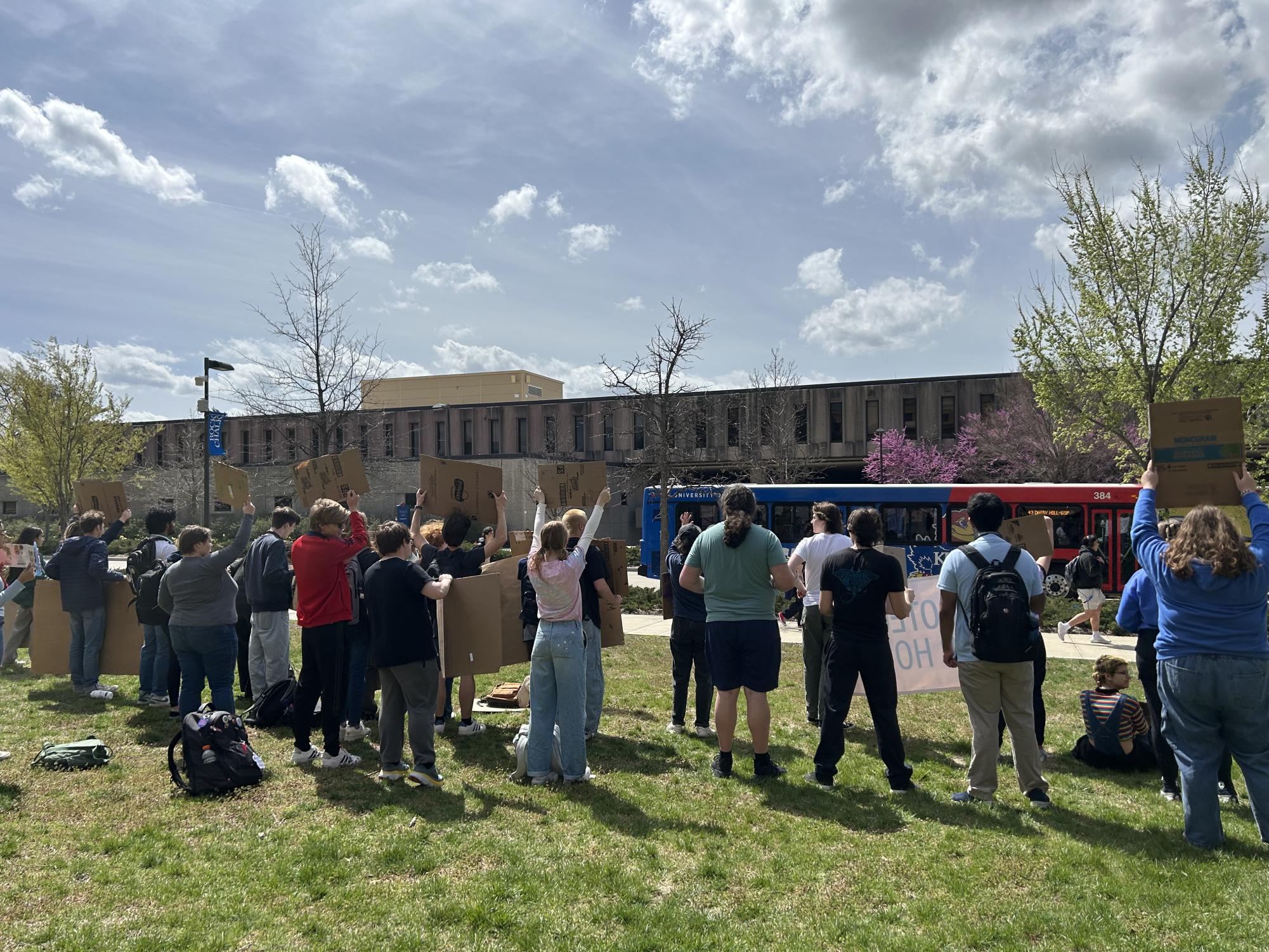Newest lander offers InSight into Mars
Months after launching and after much preparation, InSight, a NASA probe, successfully landed on the surface of Mars Nov. 26.
According to NASA, the lander’s primary function is to measure the interior of Mars to understand terrestrial planets, like Earth, better. The lander has several different instruments that it will use to make those measurements. Washburn physics and astronomy professor Brian Thomas said that this mission is quite a bit different from other recent missions.
“The main task is to study more of the geology of Mars,” Thomas said. “Most of the recent [landers] have had rovers. This one is stationary.”
Thomas said that this lander will probe the interior of Mars rather than study what is on the surface. It will do this by using some techniques that are used to study Earth.
“We know about the interior structure of the Earth from measuring earthquakes,” Thomas said. “It’s going to be a little bit different there because Mars is not quite as active.”
Thomas said that while the seismology of the Earth is very active with things like volcanoes and plate tectonics, Mars is not very active and most of these seismological systems have seized to happen there.
“[They are] trying to measure what kind of activity there is with the solid rock portion, and how active is it,” Thomas said. “At this point there hasn’t been really very many measurements of earthquake activity, or Marsquake activity I guess would be a better term.”
By measuring this activity, Thomas said scientists can better determine what the interior looks like.
“One of the significant pieces that may come out of this is an understanding of how the interior has changed over time,” Thomas said. “One thing we know right now is that Mars doesn’t have a very powerful magnetic field.”
Earth’s field is pretty powerful with a strong North and South pole, and according to Thomas, it protects the Earth from radiation from the Sun and elsewhere.
“On Mars, that’s currently nonexistent,” Thomas said. “There are smaller scale kind of magnetic regions around, and that is probably because there was a magnetic field in the past. Mars probably, maybe 2 or 3 billion years ago, looked much more similar to the Earth in terms of that.”
According to Thomas, understanding how magnetic fields are formed on planets is also helpful.
“On Earth, we know that the magnetic field has changed many times,” Thomas said. “We have good evidence that it flips directions. North becomes South, and vice versa. It gets weaker or stronger. There’s some understanding of how that happens but a lot of open questions. So, studying another example that turned out differently can give us an idea of what potentially could happen here on Earth.”
Thomas said that activity in the past is evident, due to the presence of things like massive volcanoes. Understanding this long history is important when looking at the potential for the past presence of life on the planet.
“[Looking at] if the conditions were ripe for life to get started, how long that might’ve lasted, was it long enough… those kind of questions,” Thomas said.
Mark Smith, lecturer and coordinator for astronomy outreach at Washburn, is interested in the studies of InSight as well.
“It’s going to investigate what the internal makeup is of the planet,” Smith said. “There’s s-waves and there’s p-waves. That’s how seismology works. [The probe] is going to investigate what’s inside, just the natural things that Mars does that create s and p-waves.”
Smith said that on Earth in order to investigate these waves, you have to have at least three devices to measure the waves. Because Mars is so much smaller and the crust is much less dense, it can be measured using only one probe. The measurement for Mars will be done differently.
“Just below the surface, waves travel below Mars,” Smith said. “On Earth you would never do this because there is too much noise, you can imagine how much noise goes on on the surface of the Earth.”
Another curious instrument that InSight will use is a heat probe, nicknamed “the mole.” The mole will hammer itself to about 16 feet below the surface and use sensors to measure the temperature, which will have implications to our own planet.
“One of the big questions in solar systems is why is it that Earth’s core is so warm,” Smith said. “You know it’s warm because we have plate tectonics.”
According to Thomas said that activity on Mars in the past is evident, due to the presence of things like massive volcanoes. Understanding this long history is important when looking at the potential for the past presence of life on the planet.
“[Looking at] if the conditions were ripe for life to get started, how long that might’ve lasted, was it long enough… those kind of questions,” Thomas said.
The thing that InSight will do that has Smith most excited involves the small changes of the planet’s spin.
“It’s going to basically send a continuous radio signal back to Earth,” Smith said. “Based off of the doppler shift it’s going to measure how much Mars wobbles.”
Smith said that this small wobble can tell scientists what the core is made of.
“The core is never exactly in the center,” Smith said. “It’s a little off to one side or it’s a little bit heavier on one side… It’s going to measure, very accurately, that wobble.”
All of these measurements are focused on the internal aspects of the planet rather than the external, such as the surface.
“This is almost exclusively what’s going on way down inside,” Smith said. “So in that sense, it’s something that hasn’t done before for a terrestrial planet.”
People around the globe watched as the final moments of the landing played out. Smith said that he and his family were some of those people.
“We were home yesterday because 501 was out,” Smith said.
Only around 45 percent of the missions to Mars since 1960 have been successful, so there was no guarantee of the success of InSight. As such, the scene from the Mission Support Area at NASA’s Jet Propulsion Laboratory in Pasadena, California was muted right up until the lander touched down. When touchdown of InSight was confirmed, the room broke out in applause.
Your donation will support the student journalists of Washburn University. Your contribution will allow us to purchase equipment and cover our annual website hosting costs.








